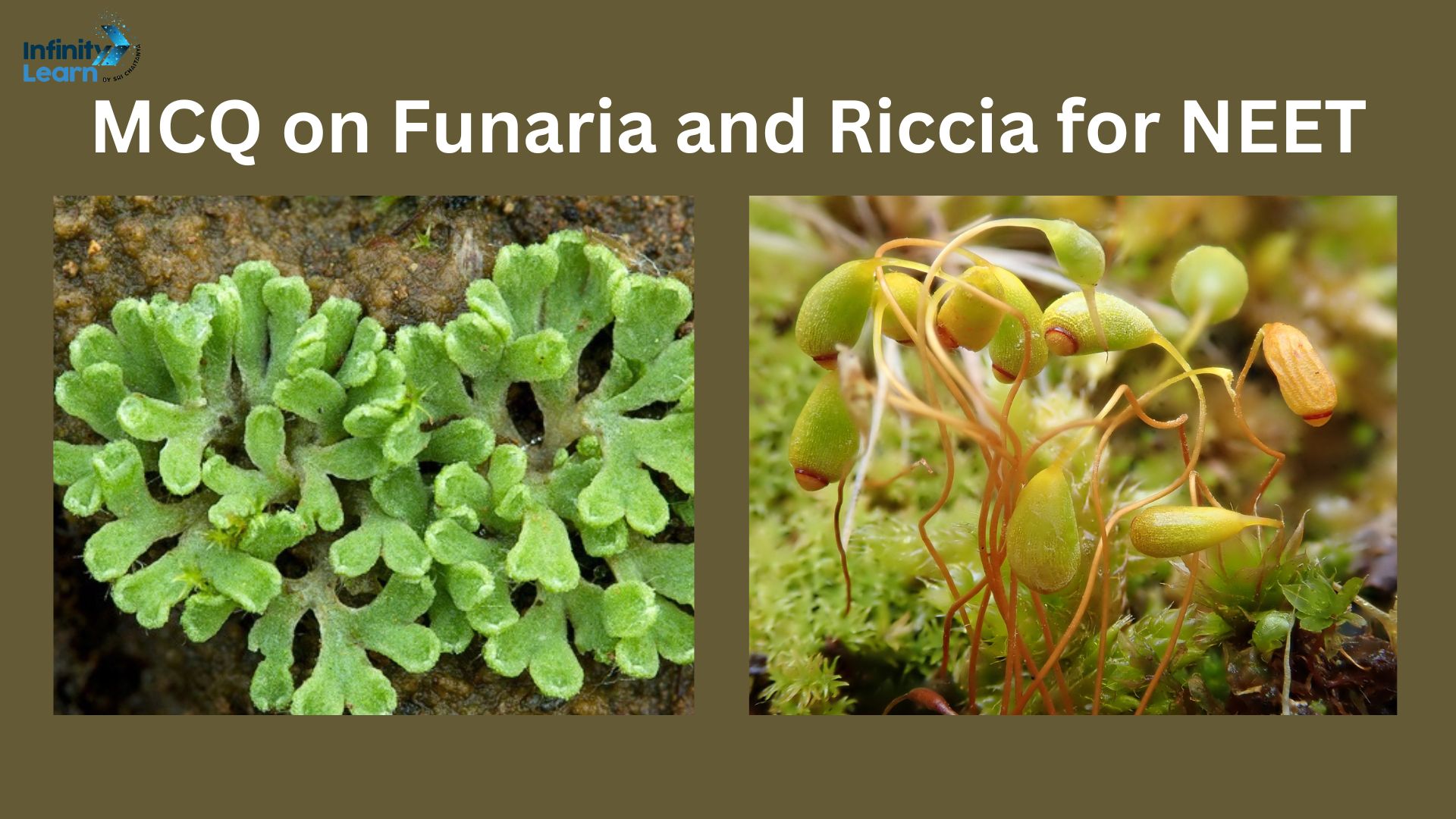Riccia and Funaria are non-vascular plants that grow on land. They need water to survive and reproduce. These plants are also known as amphibians in the Kingdom Plantae. Here’s a simple explanation of their characteristics:
- Non-vascular plants: Riccia and Funaria do not have vascular tissue that transports water and nutrients, so they are low-lying plants typically found in wet habitats.
- Amphibians: These plants can live both on land and in water, making them amphibians.
- Reproduction: Riccia and Funaria reproduce through a process called alternation of generations, which involves both sexual and asexual reproduction.
- Sexual reproduction: During sexual reproduction, these plants produce male and female gametes, which unite to form a zygote.
- Asexual reproduction: Asexual reproduction occurs through the production of spores, which give rise to new individual plants.

Funaria and Riccia MCQ for NEET
Ques 1. Peat formation can be ascribed to
1. Sphagnum
2. Riccia
3. Funaria
4. Marchantia
Answer: Sphagnum
Ques 2. This is also referred to as bog moss
1. Funaria
2. Marchantia
3. Sphagnum
4. Riccia
Answer: Sphagnum
Ques 3. In Funaria, the peristomial teeth are
1. Xeric
2. Mesic
3. Hydric
4. Hygroscopic
Answer: Hygroscopic
Ques 4. The least number of cells in a male gametophyte is found in
1. Pinus
2. Lilium
3. Funaria
4. Pteris
Answer: Lilium
Ques 5. Rupturing of _________ causes the dehiscence of moss capsule
1. Calyptra
2. Annulus
3. Persitome
4. Operculum
Answer: Annulus
Ques 6. In Funaria, the sporophytic phase is well-developed, comprising
1. Foot and capsule
2. Spore sac
3. Only capsule
4. Seta, foot and capsule
Answer: Seta, foot, and capsule
Ques 7. From protonema, the leafy gametophyte is formed in
1. Anthoceros
2. Riccia
3. Marchantia
4. Funaria
Answer: Funaria
Ques 8. The reason why Funaria is a bryophyte is
1. the sporophyte is attached to the gametophyte
2. absence of stems and roots
3. it is vascular
4. all of these
Answer: the sporophyte is attached to the gametophyte
Ques 9. In Funaria, the antherozoids are
1. aciliated
2. multiciliated
3. bicilated
4. monociliated
Answer: bicilated
Ques 10. Sensor mechanism of spore dispersal is seen in
1. Fern
2. Funaria
3. Pinus
4. Selaginella
Answer: Funaria
| NEET Biology MCQ list | |
| MCQ on Arthropoda | MCQ on Predators |
| MCQ on Tuberculosis | MCQ on Cellular Respiration |
| MCQ on Growth Hormones | MCQ on Dialysis |
| MCQ on Filariasis for NEET | MCQ on Sericulture for NEET |





